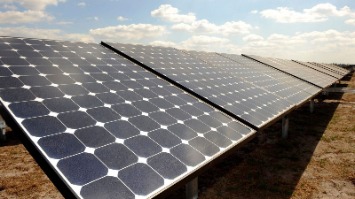Energy Companies To Invest In
Table of Contents Heading
- Top Stock Gainers For Monday: Shaw, Amc And United Airlines
- Total Equity Return For Us And Europe Companies By Sector, Jan 2020
- Project Finance Transactions For Power, By Year Of Financial Close In Selected Regions, 2015
- Choosing The Best Energy Dividend Stocks
- Why Should I Invest In Renewable Energy?
- Best Stocks Under $5
- How Profitable Are Renewable Energy Stocks?
Through March, only one new coal power FID based on project finance emerged for 2020, in Pakistan, though all project approvals were over half that for 2019 . Given an expected downturn for global energy investment in 2020, additional questions are emerging over how the role of NOCs and SOEs will evolve. Private actors, at least in oil and gas, have borne the brunt of capital cuts thus far, and SOEs may also be a vehicle for some governments to carry out fiscal stimulus measures. Still, some indebted and poorly performing NOCs are also being hit very hard by the current crisis, with knock-on effects on host governments that rely on oil and gas revenue to provide essential services . SOEs account for nearly 40% of power investments, though this share has fallen since 2015, from lower spend by Chinese SOEs in coal-fired generation and networks.

Similar goals were set by Exxon, Xcel, Southern Company and several other oil and gas companies. Earlier this year, Canadian green energy startup Eavor Technologies announced a $40 million led by BP Ventures and Chevron Technology Ventures. Investing in the energy sector has become tricky following the rapidly changing trends. The world is moving away from carbon, and this transition is creating an anxiety among energy investors. The coronavirus crisis also exacerbated problems for the industry as oil and gas demand fell sharply all over the world. But the energy sector is evergreen for investment because human economic activity is reliant on the industry. As the world returns to normal following the availability of coronavirus vaccines and falling COVID-19 cases, energy stocks will rebound.
Top Stock Gainers For Monday: Shaw, Amc And United Airlines
Today, the company does not have to overproduce to meet high labor costs, then dump cars in rental fleets, Whiston adds. GM, one of the world’s largest automakers, is investing $27 billion in battery electric vehicles over the next five years. It plans to launch 30 of these vehicles over the same time frame, says Morningstar analyst David Whiston, with two-thirds of those vehicles being sold in North America. Shares have jumped 317% through early December, and it’s up more than 900% over the past three years. Daqo’s revenues for the first nine months of 2020 have improved by 85% year-over-year, and analysts are expecting a 91% improvement across all of 2020.
“With governments and businesses placing an increased emphasis on climate issues, we think sustainable strategies will benefit in a post-pandemic world,” Haefele told investors on Thursday. “Revoking the Keystone XL pipeline is a significant step backwards both for environmental progress and our economic recovery,” the group said in a press release. “This misguided move will hamper America’s economic recovery, undermine North American energy security and strain relations with one of America’s greatest allies.” •Oil reserves seem to be a major determinant of the chosen renewable strategy.
The recent decline in BE stock may offer a great opportunity to capitalize on market irrationality. The coronavirus crisis has caused millions of jobs to evaporate, placing many people in a struggle just to pay rent or buy food. Solar energy firms had been steadily rising before the virus hit, but gains were wiped out along with the rest in the market flush. Solar energy is undeniably a part of our future and the market is now trading at a discount.
Total Equity Return For Us And Europe Companies By Sector, Jan 2020
So far, credit risk profiles and issuance costs are broadly comparable to that of conventional instruments, though there are periods of outperformance. In the first quarter of 2020, returns for green bonds were in line with that for global investment-grade bonds. New types of instruments are now seeking to better tie financial performance to environmental outcomes– e.g. interest rates for a USD 2.5 billion Enel bond issued in 2019 are tied to goals for renewables capacity and emissions levels.
Since 2016, state-backed sources have accounted for over 60% of the financing of new coal power. The majority of this stems from SOEs building new plants on balance sheet in China, but also in India and Indonesia. A mix of private actors have also taken investment decisions in these markets, as well as in other emerging Asian countries, Japan, Korea and the Middle East. In 2020, the free cash flow position of shale companies is set for its worst year since 2015. Companies have announced significant cost-cutting and capital reduction measures.
Chris James’ Engine No. 1 owns a $37.8 million stake in Exxon, as of the end of the fourth quarter of 2020. The energy sector got totally pummeled in 2020, as oil demand crashed and oil and gas plants came to a screeching halt. Major energy giants like ExxonMobil, Chevron, BP and Aramco all posted heavy losses for the year. In August 2020, Saudi Aramco announced to cut its capital expenditure to $25 billion or less in 2021 amid coronavirus-related struggles.
Stock ownership allows investors to vote on company issues and the selection of the board of directors at annual shareholders meetings. Already, some investors are taking stronger action to engage energy companies on sustainability issues and one indicator of change is the near-doubling of stewardship teams of major asset managers between 2017 and early 2020 . Further monitoring is needed to assess investor commitments and industry impacts in this area, particularly amid the current economic downturn. The share of private-led energy investment, in terms of ownership, has increased since 2015. There has been a growing role for renewables, where private entities own nearly three-quarters of investments; energy efficiency, which is dominated by private spending; and private-led spending in grids and battery storage. But state-led investments have remained relatively robust in certain sectors, such as oil and gas and fossil fuel-based generation. Overall, the SOE share of energy investment was 36% in 2019, down from nearly 40% in 2015.
Project Finance Transactions For Power, By Year Of Financial Close In Selected Regions, 2015
Shell has taken second place for the number of clean-energy deals done since 2010, and has usurped Total SA as the most active investor this year, the report shows. The Anglo-Dutch company’s experiments withflying wind turbinesare a contrast to Chevron, BP Plc and Repsol SA, which have concentrated on portfolios closer to their core business operations, such as electric-vehicle charging infrastructure. The data compiled by BloombergNEF underscore the quickening pace of the transition to low-carbon energy among the world’s largest fossil fuel producers, and the scale of the trans-Atlantic divide. European majors closed seven times as many deals with renewable-electricity and storage companies as their U.S. counterparts since 2010. Major oil companies are poised to do a record number of clean-energy deals this year, with Royal Dutch Shell Plc leading a group of European companies that are well ahead of their U.S. rivals. As consumer preferences shift and evolving technologies open more revenue streams, oil companies are diversifying where they get their energy from.

Benzinga breaks down how to sell stock, including factors to consider before you sell your shares. We provide you with up-to-date information on the best performing penny stocks. When looking for solar companies to invest in, always keep a few key features in mind.
Choosing The Best Energy Dividend Stocks
Recently, several companies raised over USD 30 billion from debt markets to shore up liquidity and maintain commitments to shareholders. While the Majors are uniquely positioned to exercise this option compared with smaller companies, some have witnessed credit downgrades that may make borrowing more expensive over time. Companies across the oil and gas sector now face an unprecedented stress test – in their business strategies, operations and financial models – from a sharp demand shortfall from the current economic crisis and a supply overhang . The sector as a whole faces the prospect of a smaller and more competitive space within which to operate, though the financial implications and strategies vary strongly by type of company. Here we discuss the choices faced by oil and gas Majors in balancing investment priorities with new financial pressures – to weather the current downturn and position future energy portfolios.
Research Sector and Industry performance Get the latest news and analysis for sectors and industries. Get instant access to more trading ideas, exclusive stock lists and IBD proprietary ratings for only $5. Meanwhile, even integrated energy giants Exxon Mobil , Chevron and Royal Dutch Shell are pouring more money into U.S. shale plays, especially the Permian Basin. “What is U.S. electricity generation by energy source?” Accessed Feb. 15, 2020. In 2018, natural gas produced 1.69 trillion kilowatt-hours of electricity in the U.S., which represented 35% of the electricity from all sources. The U.S. Energy Information Administration projects that it could top 40% by the end of 2020 as fracking operations in the U.S. and Canada have led to large quantities of natural gas to be extracted at low prices. The natural gas producer operates five liquefaction units in Louisiana, with a sixth in production.
In China, companies have shelved a number of smaller plants in recent years, while local economic and employment factors provide incentives to continue investing in new ones. Electricity sector investment by the private sector and consumers declined less than that of SOEs over 2015‑19, mainly due to more resilient investment in renewables and a higher share of grid spending in markets with investor-owned utilities. This was reinforced by a rise in distributed solar PV and an increase in consumer spending on energy efficiency, helping to boost the total private share. Notably, in emerging economies, private actors play a predominant role in renewables investment , but their projects typically sell to state-owned utilities.
Why Should I Invest In Renewable Energy?
However, other resilient names have recently added a lot to their share prices, and could be smack-dab in the middle of a rebound. The company also boasts one of the best balance sheets in the electric utility sector, including one of the highest credit ratings in its peer group. It also has a conservative dividend payout ratio for a utility, which adds to its strong financial profile. These are the alternative energy stocks that had the highest total return over the last 12 months. The comments, opinions and analyses expressed herein are for informational purposes only and should not be considered individual investment advice or recommendations to invest in any security or to adopt any investment strategy. While we believe the information provided herein is reliable, we do not warrant its accuracy or completeness. The views and strategies described on our content may not be suitable for all investors.
- Despite the potential, problems still exist when it comes to implementing solar energy systems.
- The company has sued state utilities commissions over laws that encourage providers to use local electricity companies in Texas and the loss of a utility contract to a competitor in Massachusetts.
- A fund that scores well in the “environmental” category likely avoids investing in companies with a large carbon footprint and may invest in multiple clean energy stocks.
- The financial markets can play an amplification role for energy investment on both the downside and the upside.
It’s been an up and down ride for this maker of solar panels and related equipment. While it has built and operated many of the world’s largest solar power plants, its operation is frequently impacted by the whims of solar power demand, pricing, and geopolitical uncertainty. First Solar made headlines as one of the worst-performing stocks during the Obama Presidency. The world’s population isn’t getting any smaller, and the demand for energy is only expected to grow over time. For decades, energy companies have been reliable sources of return for investors; and while this is likely to continue being the case, the energy industry is changing, with new companies emerging to cash in on the demands for morerenewable energysources. Tim Lemke is an investing expert with more than 20 years of experience writing about business and investments. During his career, Tim has written extensively about earnings, mergers and acquisitions, and the stock performance of major corporations.
Daylight hours need to count for solar systems to reach max efficiency and weather often just does not want to cooperate. It operates under 4 business segments – Con Edison of New York, Orange & Rockland, Con Edison Clean Energy Business and Con Edison Transmission. The Green Growth Fund focuses mainly on small-cap domestic companies with attractive growth potential, while the Green Solutions Fund largely includes small- and medium-cap domestic and international companies. Since the consequences of business as usual will be catastrophic, many experts say that high-carbon technologies like dirty coal and low-mileage cars are becoming less attractive to investors. Air Products’ superior returns and growth make this a good stock to own for the long-term.
Canadian Solar had a tough year in 2019, but had consistently increased revenue and profits in the previous 3 years. With 4 straight earnings beats, Canadian Solar appears heading back in the right direction. That said, many investment professionals, including Winslow’s Jack Robinson, continue to be optimistic about the outlook for high-quality clean tech companies. It’s important for those involved in socially responsible investing to note that stocks in these indexes are not screened for social or environmental concerns—and therefore, any ETFs that mirror these indexes won’t be, either. “With the world already feeling the effects of climate change, it’s vital that we use every possible avenue to finance green-energy solutions,” says Green America executive director Alisa Gravitz.

We were also able to identify in advance a select group of hedge fund holdings that significantly underperformed the market. We have been tracking and sharing the list of these stocks since February 2017 and they lost 13% through November 16. That’s why we believe hedge fund sentiment is an extremely useful indicator that investors should pay attention to.
Still, there are questions over how the PPAs evolve to satisfy more buyers, and provide adequate risk management amid changing market conditions. Further effort is needed to scale them in emerging economies, where frameworks have been less accommodating. Looking beyond 2020, and even if oil prices recover back to 2019 levels, investment and the journey towards a more sustainable business model may depend on companies considering further innovation or efficiencies to reduce costs, or improve ultimate recoveries. Efforts to find the most productive areas of shale basins, adopt new technologies and expand infrastructure enabled US shale companies to double production over the past five years while continuing improving capital efficiency 40% since 2015. But the ferocity of the crisis in 2020 has been well beyond the contingencies that the industry had planned for.

